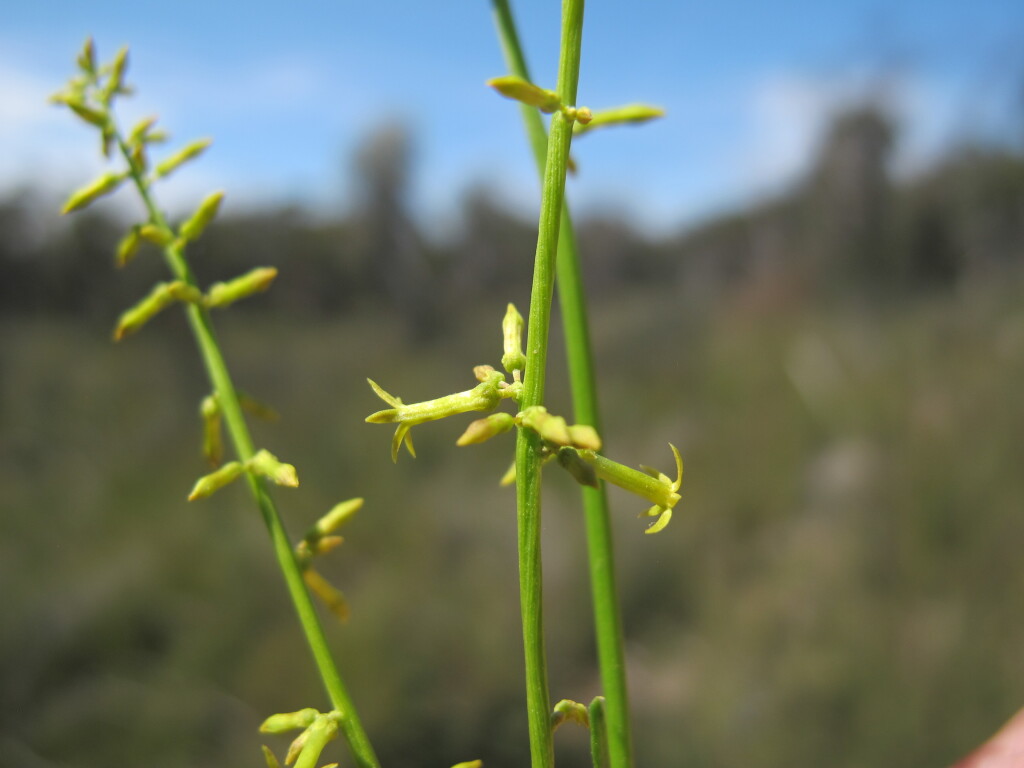Stackhousia viminea
Sm. Yellow StackhousiaGlabrous, non-rhizomatous perennial to 70 cm high; stems erect or ascending, rarely branched above. Leaves narrowly obovate to obovate or narrowly elliptic, 1–3.5(–5) cm long, 1–7.5 mm wide, those at base sometimes reduced to scales. Inflorescence cylindric, spike-like; flowers 1–5 at nodes, shortly pedicellate, subtended by a cluster of several ovate bracts to c. 1 mm long. Hypanthium 0.4–0.7 mm long; sepals 0.5–0.8 mm long, entire to undulate; corolla pale green to deep yellow, rarely tinged red-brown outside, tube 2.2–3.5 mm long, lobes 1.5–3 mm long, obtuse to acuminate; gynoecium 3-partite. Mericarps 1–3, broadly ovoid to broadly ellipsoid, 1.5–3 mm long, rugose to coarsely rugose-reticulate, sometimes tuberculate; basal cavity very shallow. Flowers Aug.–Dec.
Wim, VVP, GipP, OtP, WaP, CVU, GGr, DunT, NIS, EGL, EGU, WPro, HSF, HNF, VAlp. Also Qld, NSW, ACT, Tas. Except for the north and north-west, scattered through the state (rare in far south-west), occurring mostly on sandy or shallow, rocky soils from near sea-level to montane areas (e.g. near Bogong Village), in heathland, open-forest and woodland.
Barker, W.R. (1999). Stackhousiaceae. In: Walsh, N.G.; Entwisle, T.J., Flora of Victoria Vol. 4, Cornaceae to Asteraceae, pp. 49–54. Inkata Press, Melbourne.
 Spinning
Spinning

